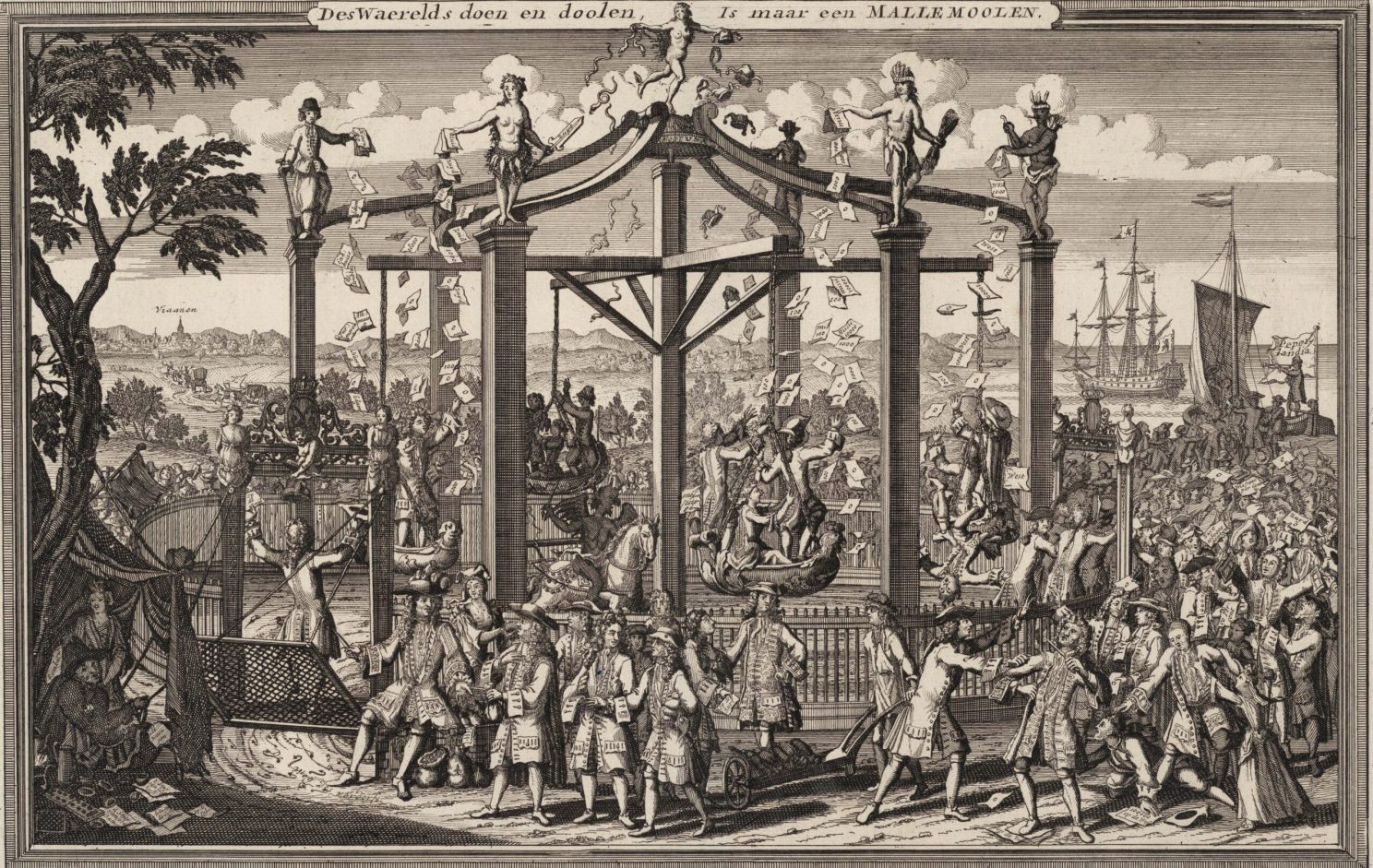HBS exhibit looks at one of the most infamous financial crashes in history

“Des Waerelds Doen en Doolen, is Maar een Mallemoolen (The Actions and Designs of the World Go Round as if in a Mill).” Het Groote Tafereel der Dwaasheid. Amsterdam, 1720. Kress Collection, Baker Library, Harvard Business School
Harvard Business School’s Baker Library has opened a new exhibition that focuses on the history of one of the most infamous financial crashes. “The South Sea Bubble, 1720: Narratives of the First International Crash” was organized by Baker Library Special Collections.
A formative moment in financial history, the bubble was the result of speculative mania that swept across Great Britain and Europe in the early 18th century. British citizens from all walks of life invested in the South Sea Company, a public private enterprise that was granted a trade monopoly with Spanish colonies in South America in return for converting British government debt into company shares. In 1720, the company profits peaked before abruptly crashing.
Baker Library holds one of the world’s most extensive collections relating to the 18th century financial crisis. Through original books, pamphlets, manuscripts, financial instruments, satirical prints, and broadsides, the exhibition explores the South Sea Company’s history, including:
- The Founding of the South Sea Company: Chancellor of the Exchequer Robert Harley and businessman John Blunt used the debt-equity swap model of the Sword Blade Company to form the South Sea Company in 1711.
- The South Sea Company and the Slave Trade: In 1713, under the Treaty of Utrecht, Spain gave Great Britain a license to conduct the slave trade in the Spanish colonies of South America. The contract was given to the South Sea Company.
- The Bubble: The ties among South Sea Company, the government, and the monarchy created an enterprise characterized by many historians as, theoretically, “too big to fail.”
- The Crash: After hitting its peak in July the bubble finally burst, and many Britons and Europeans lost their fortunes overnight.
- The South Sea Bubble in Satire and Farce: After the crash, the public could choose among ballads, songs, farces, poems, broadsides, pamphlets, satirical prints, and even playing cards that offered entertaining perspectives on the fraud and folly of the speculation mania.




